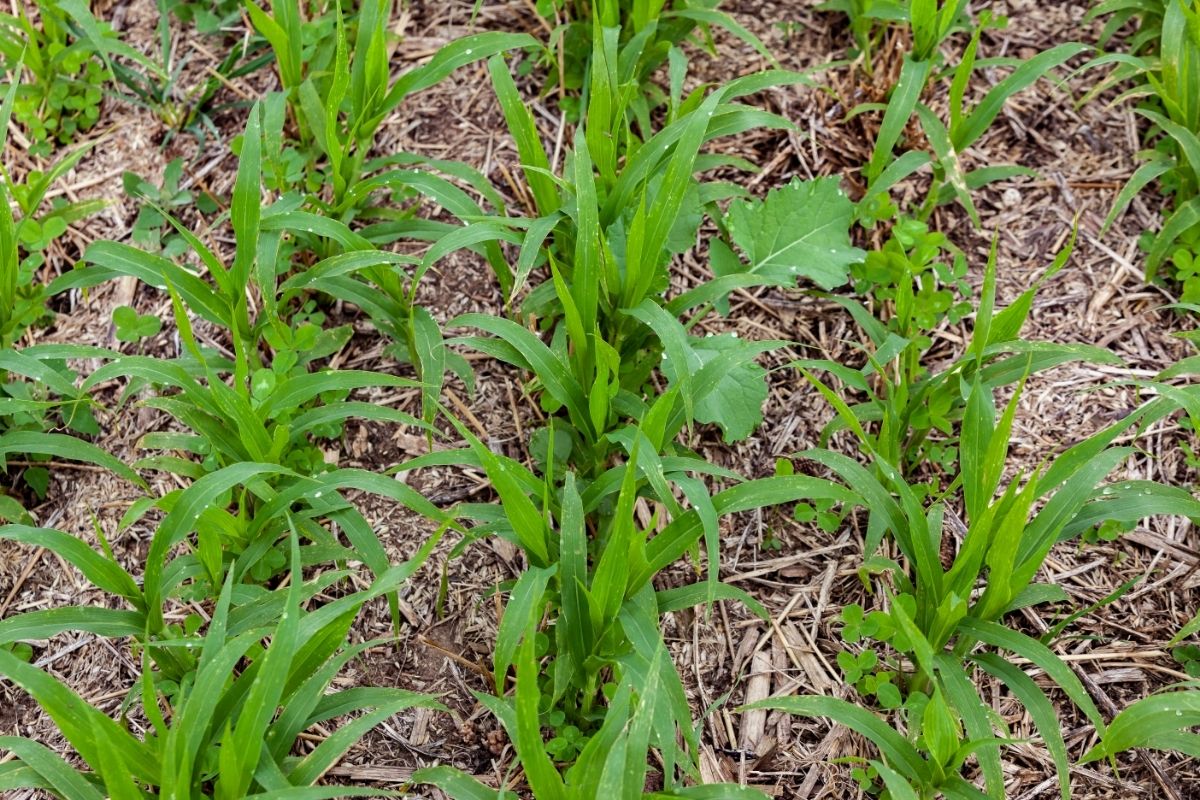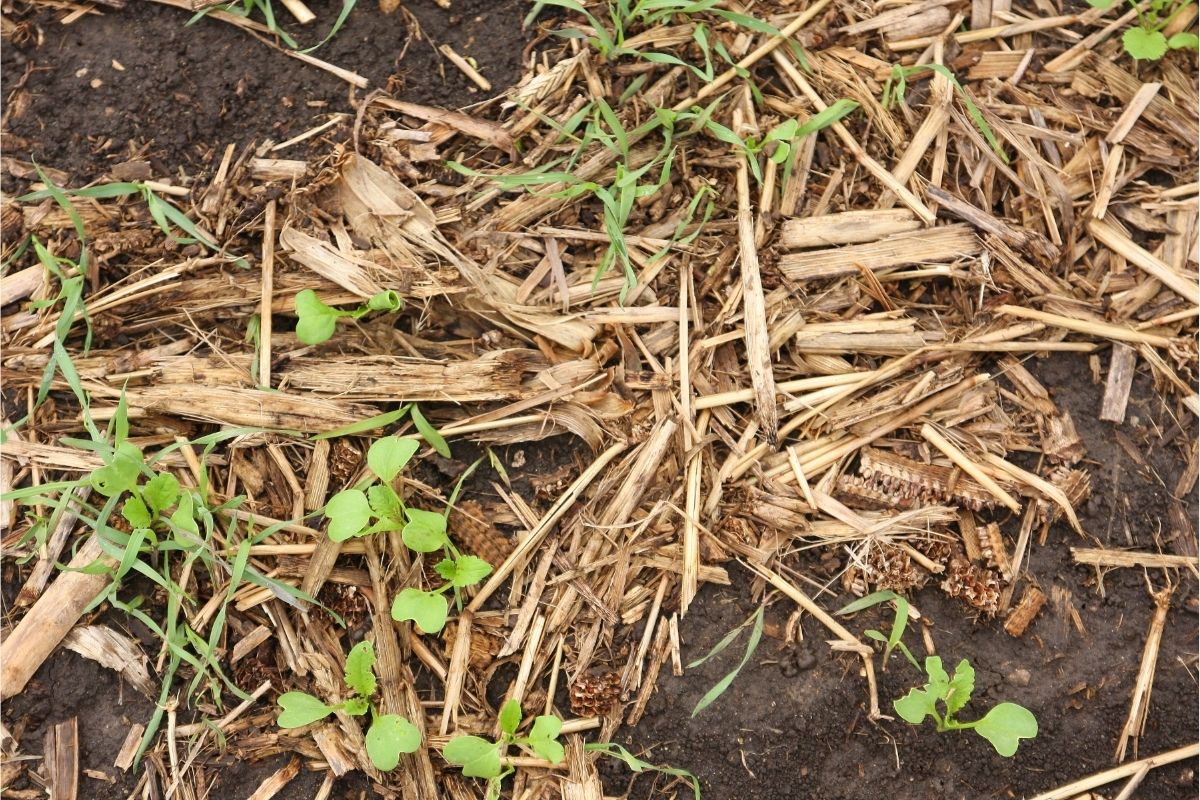Whether you’re a backyard gardener or run a small farm, finding the best cover crop for clay soil can be an essential addition to any crop rotation plan. Cover crops are best planted in the fall or winter, which gives them plenty of time to grow before the cold weather kills them.
Planting cover crops can dramatically improve your soil’s drainage and fertility while providing free organic matter for your soil depleted by plantings of cash crops. If you plant a cover crop that’s suited to the soil, you can reduce your workload in countless ways.

What is Cover Crop?
Cover crops are plants grown to improve agricultural soil quality and protect against erosion. The most common cover crops are legumes, which have root nodules containing nitrogen-fixing bacteria. Nitrogen is an essential fertilizer for plants to grow properly.
A cover crop is good for the following:
- First, increase the organic matter in the soil.
- Add nitrogen to the soil.
- Build uproot systems that can seek out nutrients for next year’s crop.
As they break down, cover crops release nutrients for your future plantings. The roots of a cover crop prevent erosion damage, and their leaves, stems, and flowers provide vital food for bees, birds, and other pollinating insects.
When to Plant Cover Crops
You can plant cover crops at almost any time of year, but planting in the fall and winter is preferable.
If you live in an icy area, you should plant your cover crop before the ground freezes. Winter weather will kill your cover crop, so planting after the temperature drops below freezing won’t work.
Planting cover crops in the fall allows for a better root system. In addition, planting in the fall can help break up clay soil and improve its drainage so planting cash crops is more straightforward the following spring.
Winter Cover Crops
In colder regions, planting cover crops during the winter is an excellent way to protect your soil from erosion, add organic matter, and give your soil a healthy dose of nitrogen.
Common winter cover crops include cereal rye, winter peas, turnips, vetch, and other legumes. Winter annuals are perfect for planting in clay soil in the fall because their roots help break up dense soil.
Fall Cover Crops
Although planting a cover crop in the fall can give you great benefits, planting in spring or summer is more desirable for farmers who plant cash crops during this time.
Planting a winter cover crop requires some preparation beforehand, including planting on a day when the soil has been worked that year and planting your seed at least six weeks before the average frost date in your region.
How to Plant Cover Crops for Gardens and Farms
When planting a cover crop, choose varieties suited for your location and climate. Remember that different cover crops have various strengths, so be sure to pick one that will benefit your soil type.
Plant seed according to the package’s instructions. Cover crop seeds are available at most garden centers and online. Be sure you plant enough seeds for your intended purpose—too little can lead to failure while planting too much can create competition among your plants and be challenging to manage.
Once you’ve planted your seeds, apply a light layer of straw or mulch around the base of your cover crop plants. This protects it from extreme cold and other conditions that can kill your plants. When it comes time to plant cash crops, pull the straw away from the base of your plants and push out any excess mulch from the seedbed.
What is the Best Cover Crop for Clay Soil?
Several cover crops can improve your soil and break up clay soil. These include:
- Buckwheat
- Clover
- Alfalfa
- Winter Wheat
- Buckwheat
Buckwheat is a fast-growing, flowering plant planted any time of year. It’s an excellent cover crop to plant in the fall or spring, and it grows quickly to protect against erosion.
Buckwheat grain provides food for birds as it matures, attracts bees as it blooms, and provides ground cover as it breaks down after tilling under.
Clover
Like buckwheat, clover has nitrogen-fixing root nodules, which help add nitrogen to your soil. It’s a great cover crop to plant in the late winter, and it grows well in both cool and warm seasons.
You can plant clover any time of year, but spring is best for growing this cover crop. If you plant clover during the summer, make sure to water often and provide shade or it will wither and die.
The root system of clover is expansive, and it helps add organic matter to the soil. Further, clover acts as ground cover and can prevent erosion.
Alfalfa
Alfalfa is another excellent cover crop to plant any time of the year. It’s best to plant this cover crop in the spring because it needs plenty of water to grow and establish itself.
The deep taproot of alfalfa can break up even the densest clay soils and improve drainage. Like clover, alfalfa adds organic matter to your garden over its 12-month growth cycle and can keep weeds down. It’s also deer resistant making it an excellent choice for organic gardeners.
Winter wheat
Winter wheat is one of the best cover crops to plant in fall or spring and grows well in most regions of the United States. It’s cold tolerant, and like alfalfa, its root system can break up clay soils.
However, unlike other cover crops, winter wheat you can harvest as a cash crop at the end of the growing season.
How to Use Cover Crops for Gardens
Cover crops are an excellent way of adding organic matter to your soil. They help improve drainage and prevent erosion of new seedlings.
There are many different cover crops, each with its benefits for the garden or farm. Switching up the kind of cover crop you plant will give your soil a boost every time.
Whether you’re using cover crops to improve your clay soil or just adding organic matter, it’s best to plant a cover crop in fall or spring and let it grow for 9-12 months before tilling under.
It’s important to note that if you’re planning on harvesting cash crops in the early spring, it is best to use a cover crop that is cold tolerant. That way, you can till the soil underneath your cash crop without worrying about disturbing the roots of your cover crop.
Ground cover crops such as buckwheat, clover, and alfalfa can prevent weeds from growing and add significant organic matter to your soil.
Depending on the type of cover crop you choose, it’s essential to either till under or leave it in place after harvesting your cash crops.
As with many initiatives, using cover crops takes patience and time but will be well worth the effort in the long run.

FAQ’s on Cover Crops for Clay Soil
Will Cover Crops Help Clay Soil?
Yes, cover crops help improve your soil by adding organic matter and nitrogen to the clay.
What Is the Fastest Growing Cover Crop?
One of the fastest-growing cover crops is annual ryegrass, which you can plant in fall or spring and harvest cash crops before planting new seeds.
What Is a Good Summer Cover Crop?
A good summer cover crop is buckwheat, which you can plant any time of year, and it grows quickly to protect against erosion.
How Do I Improve Clay Soil for Framing?
There are several ways to improve clay soil, such as adding organic matter and planting cover crops. Adding organic matter will help improve the soil structure, while cover crops will add nitrogen to your soil.
Why Is Clay Soil Not Suitable for Farming?
Clay soil is not suitable for farming because it’s dense and slow draining. It also requires extensive preparation before planting seeds in the spring.
Why Is Basic Clay Soil Not Good for Most Plants?
Basic clay does not contain many nutrients and is difficult to work with, making it unsuitable for most plants. This soil will soak up and hold too much water, drowning the roots.
Can I Plant Seeds in Clay Soil?
No, clay soil has a fine texture and is sticky for growing seeds. You may need to till the soil or treat it before planting seeds in the spring.

The Final Say
Some cover crops for clay soil, such as clover and buckwheat, will add nitrogen to your soil, while other types, like winter wheat, make great cash crops.
Planting a good cover crop is an excellent way of adding organic matter and improving your soil for the next growing season. In addition, it can help with drainage and prevent erosion while providing an ideal habitat for beneficial insects and pollinators. Read our article and find out what do aphids look like.
So what is the best cover crop to plant in clay soil? Of course, you can’t go wrong with winter wheat or buckwheat— both are extremely easy to grow!
